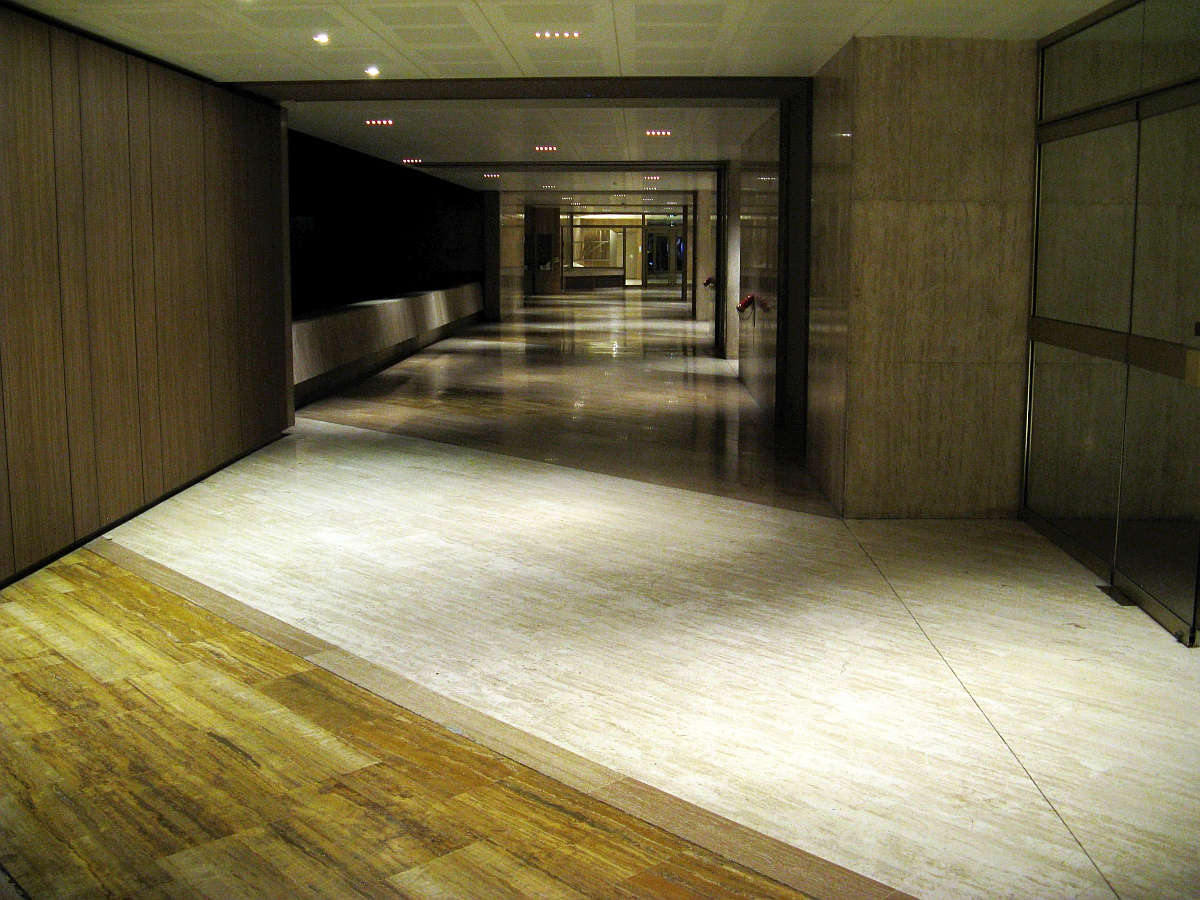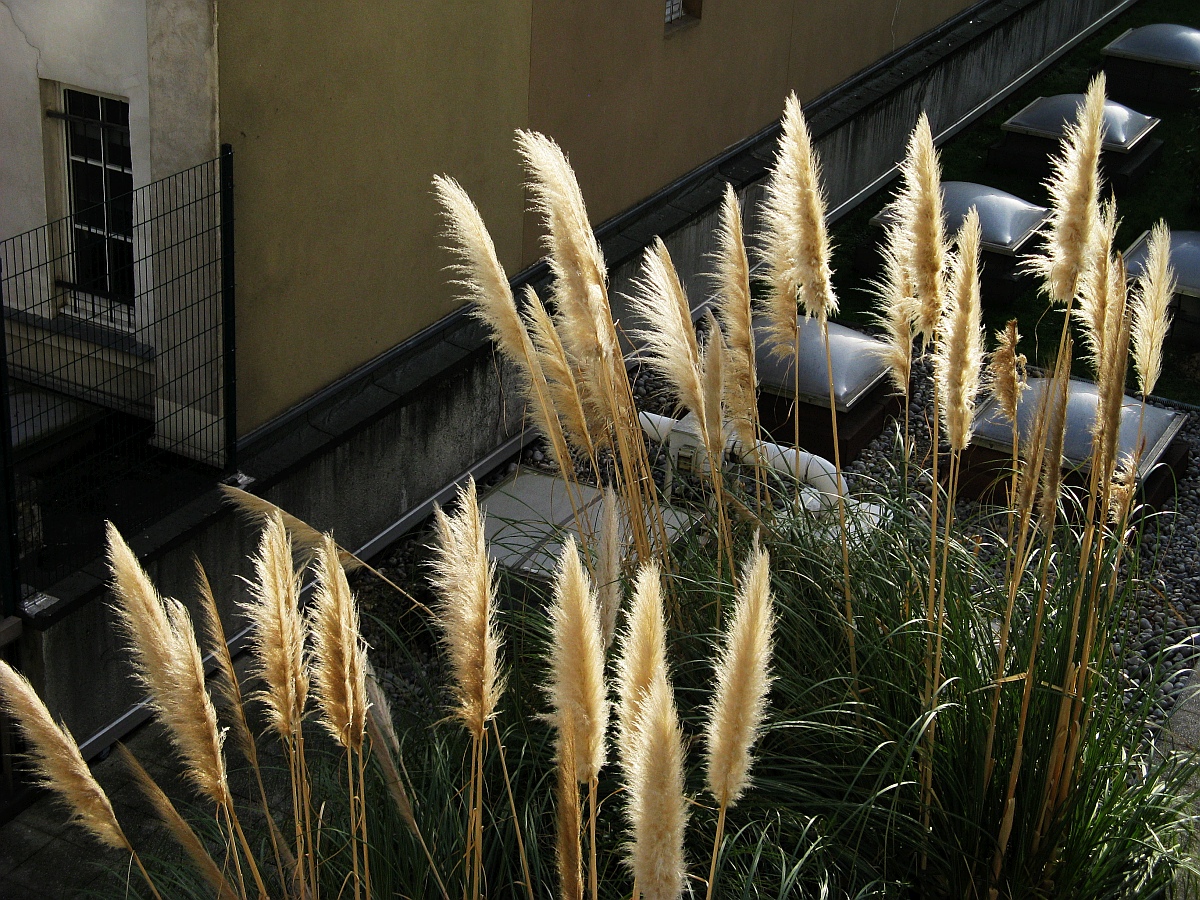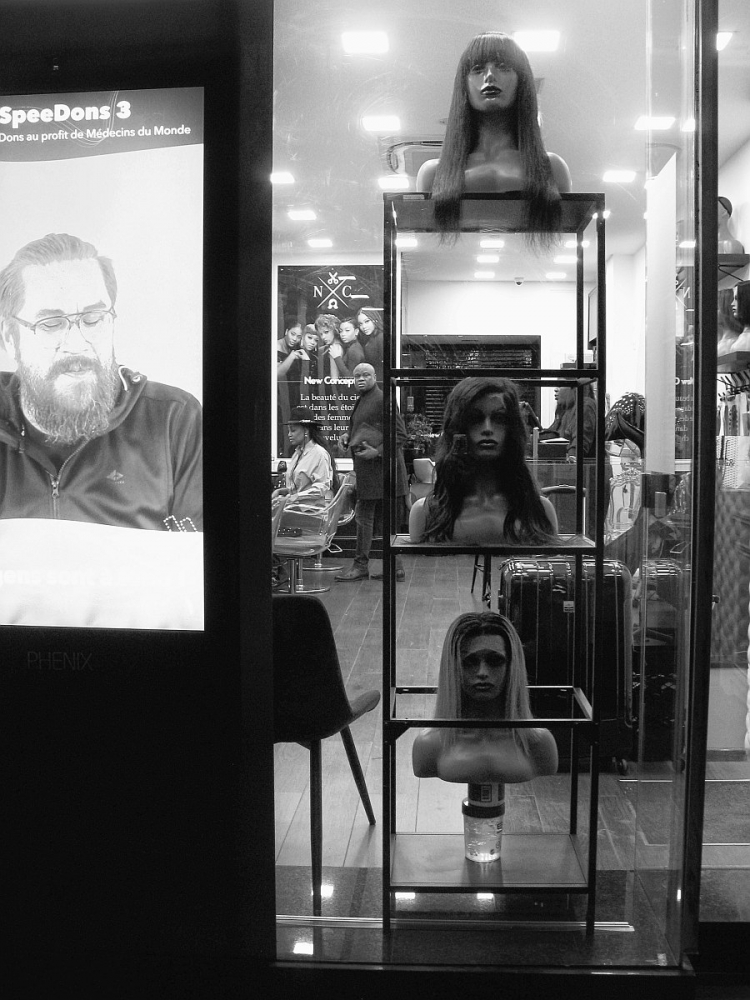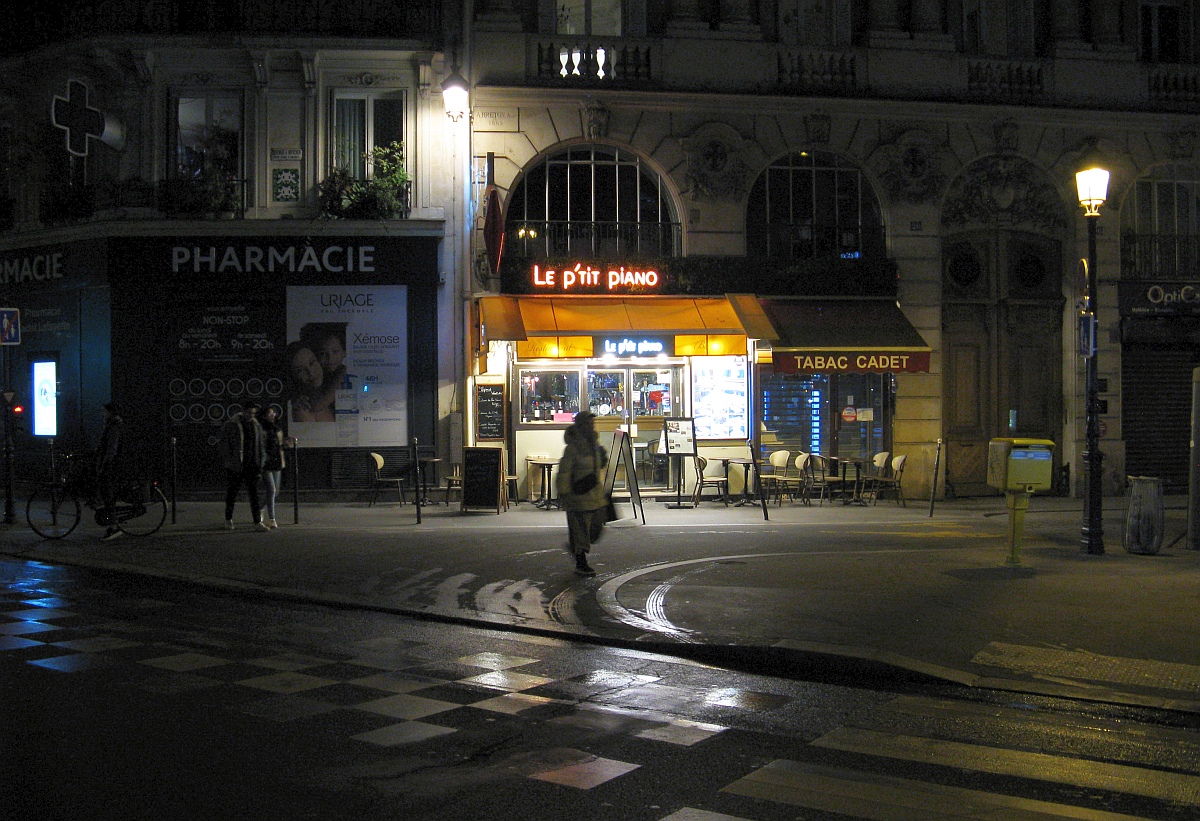| View previous topic :: View next topic |
| Author |
Message |
alex ph

Joined: 16 Mar 2013
Posts: 1571
|
 Posted: Mon Feb 20, 2023 1:32 am Post subject: Ah, that nice CCD rendering! Posted: Mon Feb 20, 2023 1:32 am Post subject: Ah, that nice CCD rendering! |
 |
|
alex ph wrote:
Finding back the taste of the mid-2000s and the easy enchantment of digital photography.
#1

#2

#3

Canon Powershot A720 IS, automatic settings.
Just to be clear: the shots are taken recently, with an older pre-CMOS digital camera. |
|
| Back to top |
|
 |
55


Joined: 13 May 2013
Posts: 709
Location: U.S.
Expire: 2022-06-15
|
 Posted: Mon Feb 20, 2023 3:44 am Post subject: Posted: Mon Feb 20, 2023 3:44 am Post subject: |
 |
|
55 wrote:
Interesting shots as always, alex. 
Can you put into words what characterizes CCD rendering compared to other sensor types?
I haven't learned to recognize the differences. |
|
| Back to top |
|
 |
RokkorDoctor


Joined: 27 Nov 2021
Posts: 1271
Location: Kent, UK
|
 Posted: Mon Feb 20, 2023 11:05 am Post subject: Posted: Mon Feb 20, 2023 11:05 am Post subject: |
 |
|
RokkorDoctor wrote:

Somehow that last shot gives me "PlayTime" vibes, as in the film by Jacques Tati...
_________________
Mark
SONY A7S, A7RII + dust-sealed modded Novoflex/Fotodiox/Rayqual MD-NEX adapters
Minolta SR-1, SRT-101/303, XD7/XD11, XGM, X700
Bronica SQAi
Ricoh GX100
Minolta majority of all Rokkor SR/AR/MC/MD models made
Sigma 14mm/3.5 for SR mount
Tamron SP 60B 300mm/2.8 (Adaptall)
Samyang T-S 24mm/3.5 (Nikon mount, DIY converted to SR mount)
Schneider-Kreuznach PC-Super-Angulon 28mm/2.8 (SR mount)
Bronica PS 35/40/50/65/80/110/135/150/180/200/250mm |
|
| Back to top |
|
 |
alex ph

Joined: 16 Mar 2013
Posts: 1571
|
 Posted: Sun Feb 26, 2023 2:59 am Post subject: Posted: Sun Feb 26, 2023 2:59 am Post subject: |
 |
|
alex ph wrote:
Thank you fellows!
What a splendid reference, Mark. Tati was mocking at the aseptic ultramodernity which has to do with the design of the building shot.
| 55 wrote: |
Can you put into words what characterizes CCD rendering compared to other sensor types?
I haven't learned to recognize the differences. |
Before passing to Nex, which a CMOS-based camera, I was using consumer CCD-based Canons and having some view of Nikon and Panasonic counterparts. So my understanding is founded on mid-range equipment from the mid-2000s. Taking these limitations into account, I'd say that CCD sensor + bundled processors work with light in a more straight forward way, giving more saturated colours and in the same time giving the image a narrower DR. For example in these well lit plants colours and lights look punchier and the whole picture has a higher general contrast (with shadows tending to black and not to colour shades) as compared to a shot taken with Nex.
#1 Canon A720

The Nex normally gives a more detailed picture thanks to its higher res sensor, but also more neutral colours and a way more detailed shadows, thus levelling the global colour contrast.
#2 Sony Nex with Elmo 1.2/50 lens (in quite a different moment, just found a similar image on tap).

I saw somewhere a comparison of CCD with positive slide film, and even if I did not use the latter, I find the allusion well speaking. When one tries to edit a jpg coming from a consumer CCD-based camera he or she quickly touches the limits of DR allowed by the image. (Strangely enough, the resized file would weight more than a Nex equivalent.) Pushing exposure of a CCD jpg even at +20%, you immediately discover ugly yellow spots in the shadows, while trying to push contrast you see how quickly light zones are blown. Even with specialized software such as Nik, one runs into the same narrow DR limitation.
For example in this sooc jpg the right part is underexposed, as the camera calculated the median exposure taken into account the overlit screen on the left.
#3

Trying to push a bit the exposure, I immediately get a blown left part.
#4

And even if I try to make local point editing in Nik, which normally reveals an impressive plasticity of NEX jpgs, with a Canon CCD jpg I discover the male face on the left screen almost lacking any reserve for PP. Pushing contrast or structure gives shadow circles around his eyes instead of revealing the hidden pixels. The same is for the eyes of the mannequins on the right, shadows having very little colour info. Nothing is hidden, you see just what you captured.
#5

So with a CCD consumer camera you get a more contrasty and more colourful SOOC shot which you have less chances to edit well in your computer. Although if you accept it, there is some simple joy of getting what you get, at least in two or three shots from 10 you see on your screen once you come back. Mostly thanks to a more vivdly captured magic of lights reflexions and shadow contrasts.
#6

#7
 |
|
| Back to top |
|
 |
calvin83


Joined: 12 Apr 2009
Posts: 7554
Location: Hong Kong
|
 Posted: Sun Feb 26, 2023 5:07 am Post subject: Posted: Sun Feb 26, 2023 5:07 am Post subject: |
 |
|
calvin83 wrote:
 
I have been a Canon G5 camera for many years. The amount of adjustment in the RAW files is much less than the later BSI CMOS sensor. I do enjoy the SOOC jpeg which give vivid color.
_________________
https://lensfever.com/
https://www.instagram.com/_lens_fever/
The best lens is the one you have with you. |
|
| Back to top |
|
 |
55


Joined: 13 May 2013
Posts: 709
Location: U.S.
Expire: 2022-06-15
|
 Posted: Sun Feb 26, 2023 8:54 am Post subject: Posted: Sun Feb 26, 2023 8:54 am Post subject: |
 |
|
55 wrote:
| alex ph wrote: |
Before passing to Nex, which a CMOS-based camera, I was using consumer CCD-based Canons and having some view of Nikon and Panasonic counterparts.
. . . |
Thank you for the generous explanation and examples!  |
|
| Back to top |
|
 |
RokkorDoctor


Joined: 27 Nov 2021
Posts: 1271
Location: Kent, UK
|
 Posted: Mon Feb 27, 2023 1:50 pm Post subject: Posted: Mon Feb 27, 2023 1:50 pm Post subject: |
 |
|
RokkorDoctor wrote:
I agree images taken with those low DR older cameras do have their own charm, esp. if you take care not to blow the highlights too much.
A bit like shooting high contrast slide film in a high contrast scene. Depending on the subject, used judiciously it can make for pleasing images.
With these older digital cameras it is certainly a lot cheaper to do those will it work/won't it work type experiments than with film 
_________________
Mark
SONY A7S, A7RII + dust-sealed modded Novoflex/Fotodiox/Rayqual MD-NEX adapters
Minolta SR-1, SRT-101/303, XD7/XD11, XGM, X700
Bronica SQAi
Ricoh GX100
Minolta majority of all Rokkor SR/AR/MC/MD models made
Sigma 14mm/3.5 for SR mount
Tamron SP 60B 300mm/2.8 (Adaptall)
Samyang T-S 24mm/3.5 (Nikon mount, DIY converted to SR mount)
Schneider-Kreuznach PC-Super-Angulon 28mm/2.8 (SR mount)
Bronica PS 35/40/50/65/80/110/135/150/180/200/250mm |
|
| Back to top |
|
 |
alex ph

Joined: 16 Mar 2013
Posts: 1571
|
 Posted: Tue Feb 28, 2023 3:00 am Post subject: Posted: Tue Feb 28, 2023 3:00 am Post subject: |
 |
|
alex ph wrote:

Canon colours are special. And yes, one should not be too much surprised with its DR limits.
I've got a Fujifilm F31 from the same era, praised for its low light capabilities thanks to a special CCD sensor (with two diodes per pixel), and find the SOOC jpeg having a bit larger DR. Still shadows has a sensibly narrower plasticity than Nex gives. |
|
| Back to top |
|
 |
alex ph

Joined: 16 Mar 2013
Posts: 1571
|
 Posted: Mon Mar 06, 2023 3:15 am Post subject: Posted: Mon Mar 06, 2023 3:15 am Post subject: |
 |
|
alex ph wrote:
An interesting pragmatically oriented text speaking not really about CCD vs CMOS, but about pixel count and the role of sensor surface to pixel size in machine vision. I appreciated its fresh effect coming from a calm discussion of technical variables, far from holy wars between makers and sensor types.
| Quote: |
If you have the choice between a larger and a smaller sensor for the same camera version, please take the larger variant if you…
- conduct precision measurements, for instance, or finest surface inspections with as little camera noise falsifying the result as possible.
- plan light-critical fast applications with a short exposure time.
- use colour cameras which are possibly supposed to replace monochrome cameras and if only little light is available, as they require 3 - 4x more light than a comparable monochrome sensor.
|
Such a tonality sounds chilling although well transposable to the MFL photography matters. |
|
| Back to top |
|
 |
alex ph

Joined: 16 Mar 2013
Posts: 1571
|
 Posted: Fri Mar 24, 2023 7:04 pm Post subject: Posted: Fri Mar 24, 2023 7:04 pm Post subject: |
 |
|
alex ph wrote:
Out of curiosity and for the sake of a not-so-old nostalgic experience I've recently got several more CCD cameras for a small price. It's quite a feeling to spend today 5 or 20 quids for a perfectly working and slightly scuffed gadget which costed from 200 to 600 quids just 15 years before. So, most part of the set comes from the mid-2000s, and one is roughtly older and was produced in 2000.
The sensor sizes vary from 1/1.7" to 1/1.25", processors which are in charge of noise suppression embetter, megapixels are growing from 3Mp in the first camera to 8-10Mp in the later, image stabilisation is implanted to some of the younger models. All this has a more visible impact on low light performance of each camera.
Meanwhile what I wanted to know this time is how much their rendering differs in good light and colourwise. I reduced all the images to a uniform 1200px on the large side, otherwise they are SOOC jpgs taken with automatic settings.
The year of production (launch) of each camera is indicated before the camera name. Just to keep a trace.

The image is clickable.
It is noteworthy that colours of the earliest 3Mp Olympus are neutral and the later models add more saturation. Also true that, even though Camedia was not a pro camera line, it was neither a compact unlike Olympus Mju, Canon Ixus or Fujifilm Z lines.
Also to note that the first three samples have more visibly blown out highlight zones, and starting from 2006 compact camera processors do a better job of keeping a larger DR (Ixus 900 launched in 2006 was subject to criticism for the highlights issue, referring to outdated hardware components and image processing).
Still, in a good light the difference among all of them is not cracking, besides the resolution. And having slightly darker shadows or slightly warmer main tones is more a matter of taste. |
|
| Back to top |
|
 |
laenee

Joined: 31 Jan 2011
Posts: 369
Location: Shanghai
|
 Posted: Tue Dec 19, 2023 4:05 am Post subject: Posted: Tue Dec 19, 2023 4:05 am Post subject: |
 |
|
laenee wrote:
   |
|
| Back to top |
|
 |
chhayanat


Joined: 11 Apr 2016
Posts: 242
Location: The Cow Belt
|
 Posted: Wed Dec 20, 2023 4:43 pm Post subject: Posted: Wed Dec 20, 2023 4:43 pm Post subject: |
 |
|
chhayanat wrote:
 
_________________
Chhayanat
Pentax-M 28/2.8; 35/2; 50/1.4; 100/2.8; 80-200/4.5; 400/5.6.
Carl Zeiss Jena Flektogon 35/2.4; Pancolar 50/1.8 (black).
Film cameras:
Zeiss Ikon Volta 135/6.3 Sonnar 9cm x 12 cm plate/sheet film;
Zeiss Ikon Ikonta 521 75/3.5 Novar (post-War) 6cm x 4.5cm
Pentax MX x 2 (black);
Digital bodies:
Pentax K200D;
Samsung GX-20; |
|
| Back to top |
|
 |
alex ph

Joined: 16 Mar 2013
Posts: 1571
|
 Posted: Fri Jan 12, 2024 1:00 pm Post subject: Posted: Fri Jan 12, 2024 1:00 pm Post subject: |
 |
|
alex ph wrote:
Thank you, fellows! |
|
| Back to top |
|
 |
|
|
|
You cannot post new topics in this forum
You cannot reply to topics in this forum
You cannot edit your posts in this forum
You cannot delete your posts in this forum
You cannot vote in polls in this forum
|
